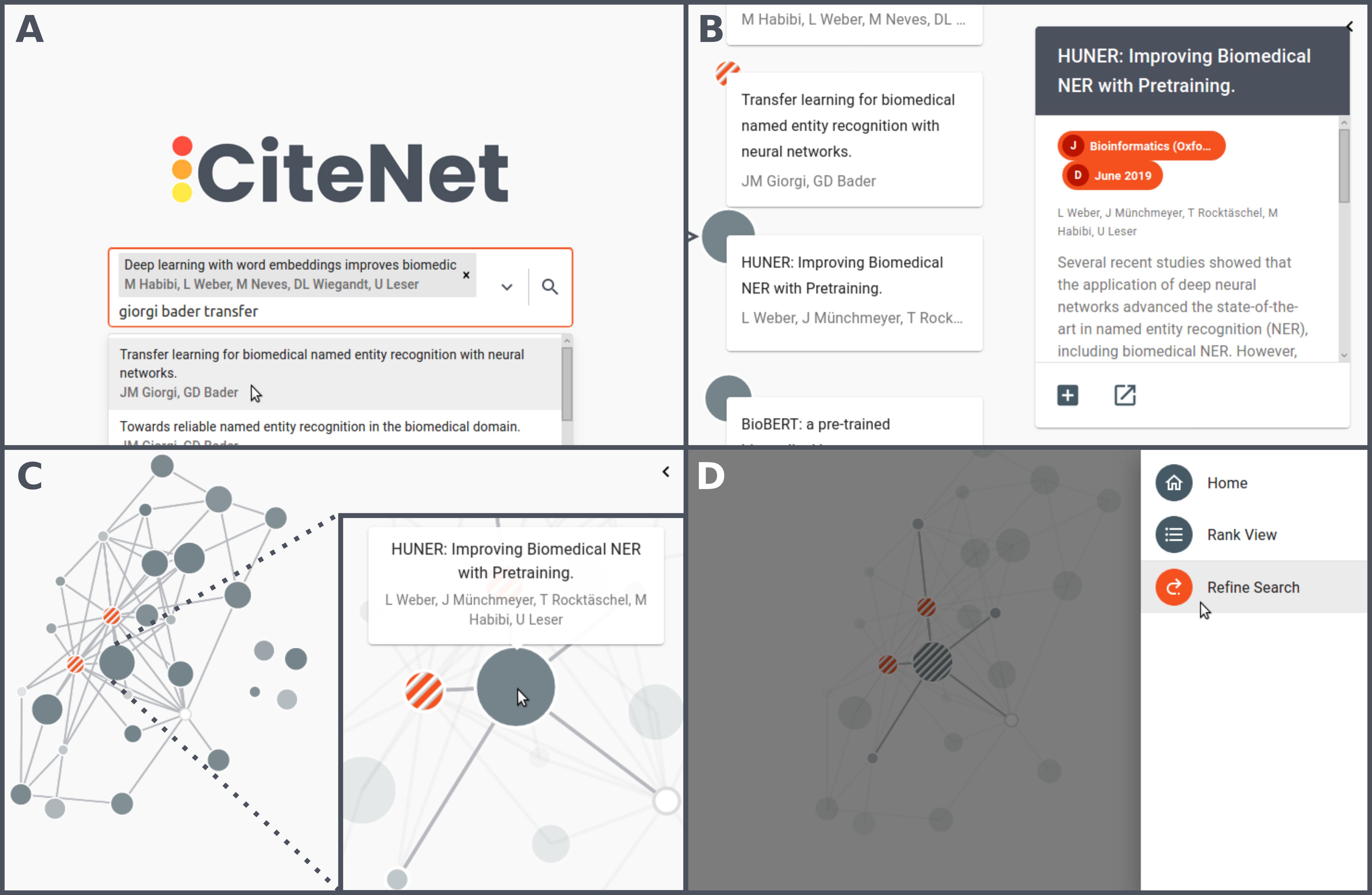CiteNet: A Search and Visualization Tool for Scientific Literature
Abstract
We present CiteNet, a search and visualization web application for exploring scientific literature. CiteNet provides an alternative to the current keyword-based search paradigm, offering instead a "key-paper" approach where the user implicitly specifies the search content by providing a set of related articles. By using underlying citation and semantic relationships between articles, CiteNet extracts a highly relevant set of articles related to the user's query. The semantics of each article is captured by a novel document embedding method. CiteNet implements a suite of visualization features to allow the user to explore the results, quickly identify important articles and further refine their search query. CiteNet is available at https://citenet.io.
User Interface.

(A) CiteNet homepage where users can input query papers using a dropdown listing papers from the database. (B) Rank view displaying the top search results. (C) Network view displaying citation relationships between nodes and (inset) popover and neighbor focusing when a node is hovered over. (D) Side panel with option to switch views or refine the search with the new search queue (denoted by hatched nodes). In (B), (D) and (D) node size corresponds to relevance to the query articles. Lighter coloured nodes are older articles, orange nodes are the original query articles and nodes with a hatch pattern are articles in the current search queue.
System Overview

All available PubMed article metadata (title, authors, abstract, journal and publication date) is downloaded from U.S. National Library of Medicine (NLM), formatted into an appropriate schema and added to CiteNet's database. Article abstracts are passed to the document encoder, which produces document embeddings. A semantic graph is then derived from these embeddings and added to the database. Citation links between articles are obtained from iCite and added to the database. Given a user query, CiteNet's search engine queries the database and produces a search result which is returned to the user as an interactive visualization. Icons made by Becris, Smashicons and Pixel perfect from www.flaticon.com.